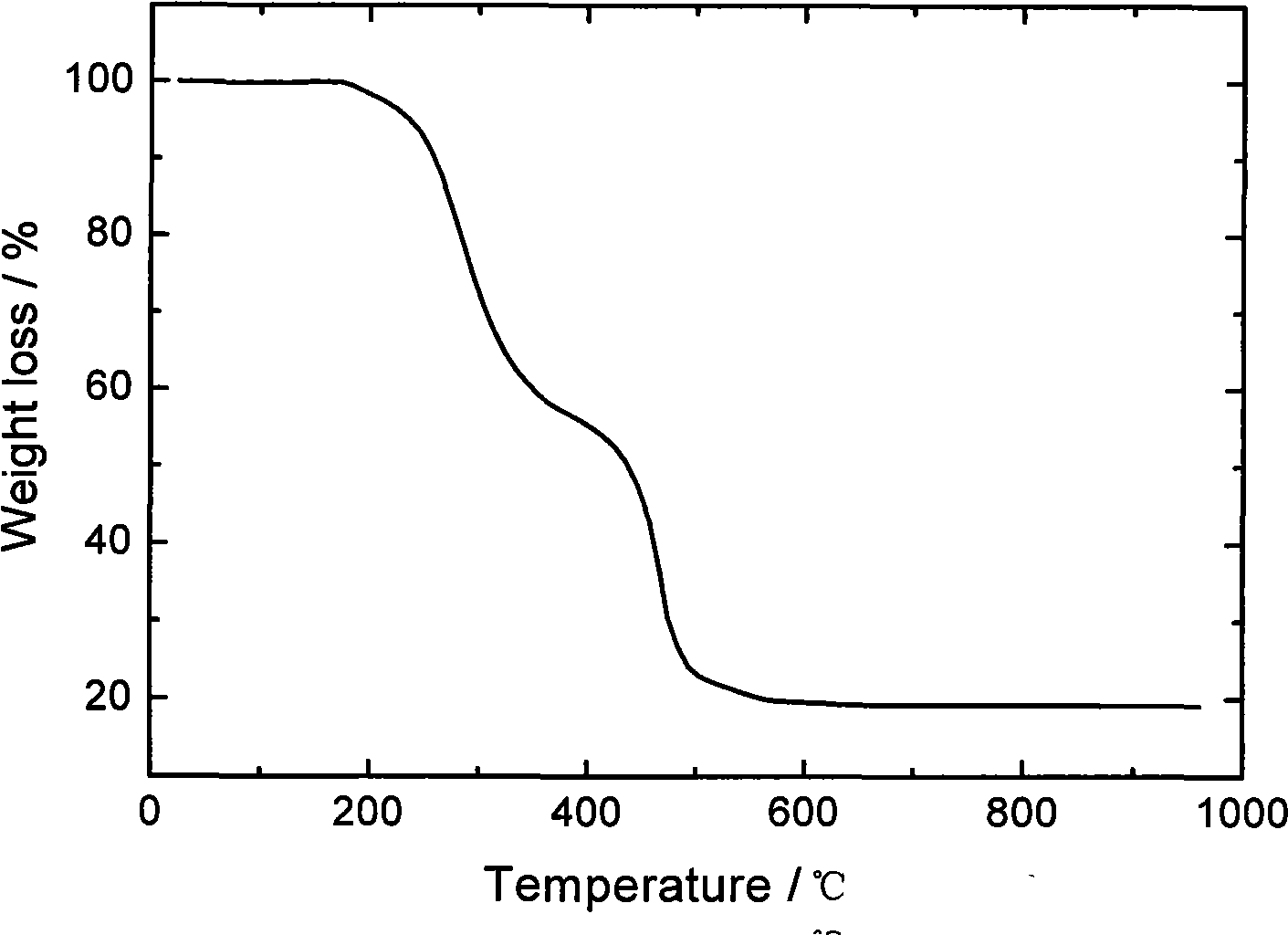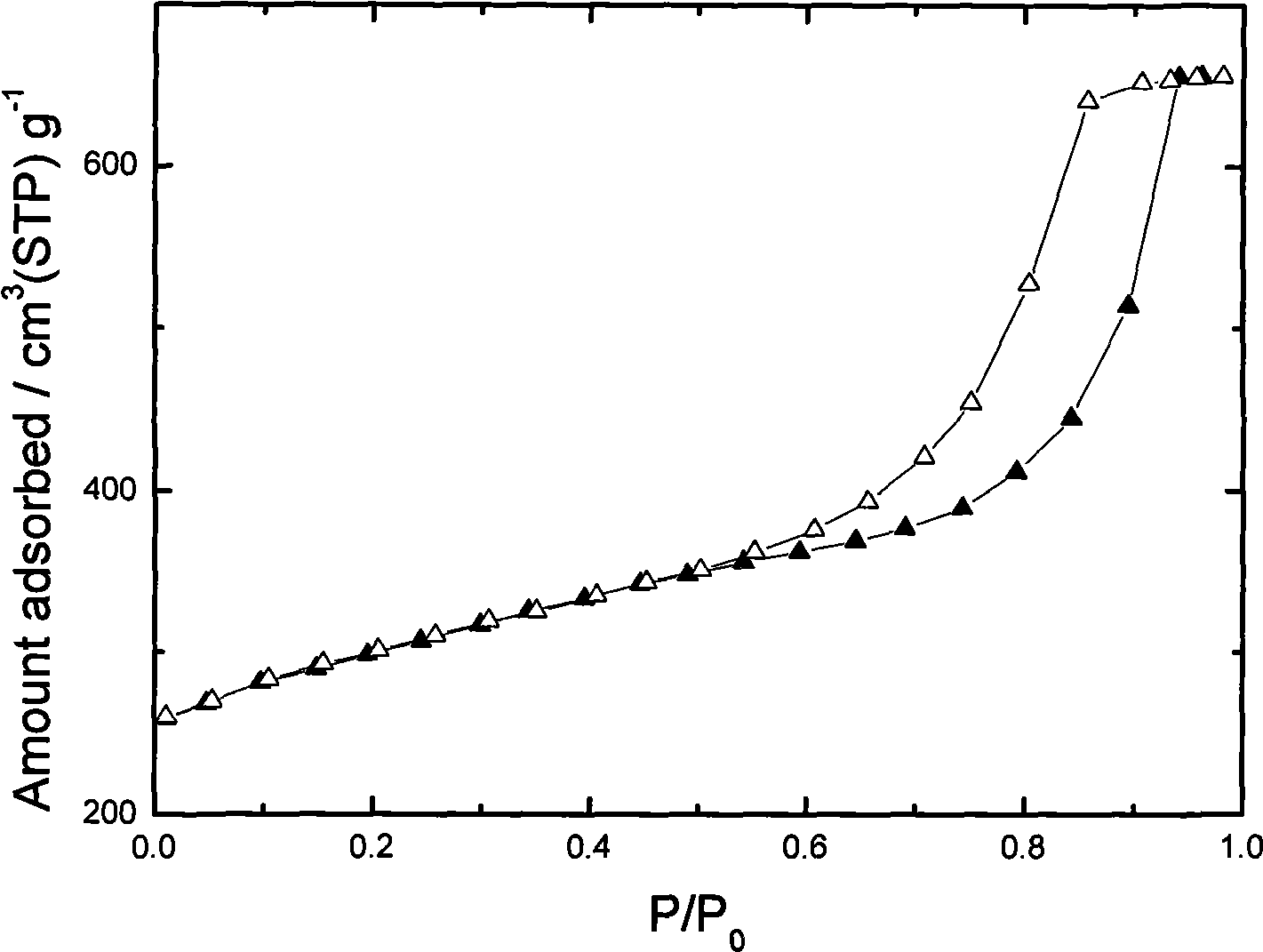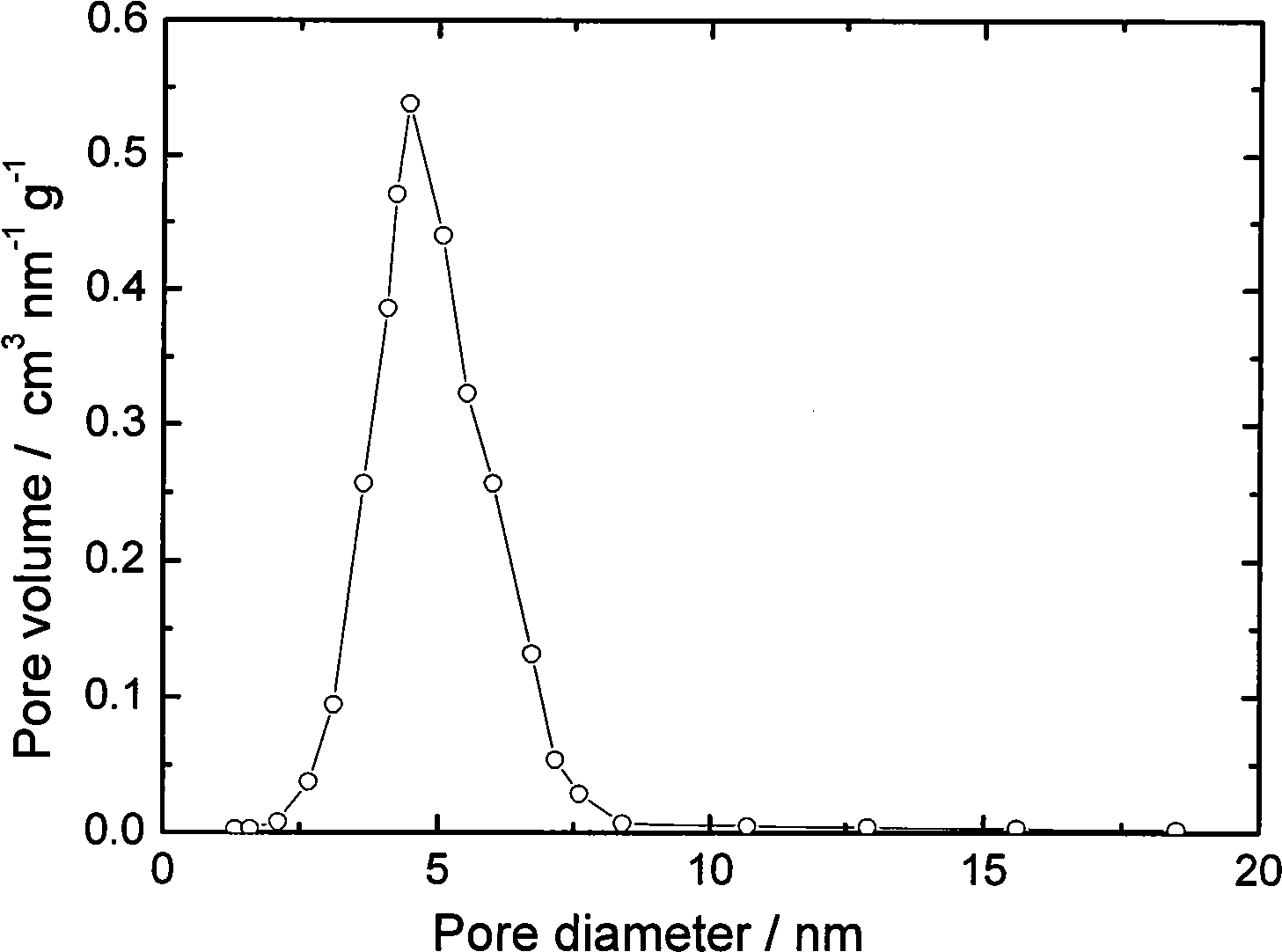Method for preparing mesoporous carbon material
A carbon material and porous carbon technology, applied in the field of porous carbon material preparation, can solve the problems of high production cost, limited popularization and application, waste, etc., and achieve the effect of low cost and simple process
- Summary
- Abstract
- Description
- Claims
- Application Information
AI Technical Summary
Problems solved by technology
Method used
Image
Examples
Embodiment 1
[0023] Take 5 g of phenolic resin, dissolve in 20 ml of ethanol; dissolve 10 g of polyethylene glycol with a molecular weight of 4000 in 30 ml of ethanol, mix the two solutions, and stir for 30 minutes. 0.5 g of sodium hydroxide was added thereto, and stirring was continued for 1 h. Ethanol was evaporated at 30-40°C for 5h, then dried in an oven at 90°C for 12h. Transfer to a tube furnace with 99.9% nitrogen protection, raise the temperature to 280°C at a rate of 10°C / min, hold for 1h, then raise the temperature to 900°C at a rate of 5°C / min, and hold for 1h. After cooling, the carbon material is taken out from the tube furnace, washed with water until the washing solution is neutral, and dried to obtain the product.
[0024] attached figure 1 It is the thermogravimetric analysis curve of the organic / organic compound. It can be seen from the figure that the thermally unstable polyethylene glycol decomposes before the gasification of the phenolic resin, and the gasification o...
Embodiment 2
[0026] Take 5 g of phenolic resin, dissolve in 20 ml of ethanol; dissolve 15 g of polyethylene glycol with a molecular weight of 4000 in 50 ml of ethanol, mix the two solutions, and stir for 30 minutes. 2.0 g of sodium hydroxide was added thereto, and stirring was continued for 1 h. Ethanol was evaporated at 30-40°C for 5h, then dried in an oven at 90°C for 12h. Transfer to a tube furnace with 99.9% nitrogen protection, heat up to 280°C at a rate of 10°C / min, hold for 2h, then raise the temperature to 900°C at a rate of 5°C / min, and hold for 1h. After cooling, the carbon material is taken out from the tube furnace, washed with water until the washing solution is neutral, and dried to obtain the product.
[0027] The carbon material prepared in this example has a specific surface area of 1100m 2 / g, average pore diameter 6.8nm, total pore volume 1.02cm 3 / g, mesopore volume 0.90cm 3 / g, the mesopore volume accounts for 88% of the total pore volume.
Embodiment 3
[0029] Take 5 g of phenolic resin, dissolve in 20 ml of ethanol; dissolve 15 g of polyethylene glycol with a molecular weight of 20,000 in 50 ml of ethanol, mix the two solutions, and stir for 30 minutes. 2.0 g of potassium hydroxide was added thereto, and stirring was continued for 1 h. Ethanol was evaporated at 30-40°C for 5h, then dried in an oven at 90°C for 12h. Transfer to a tube furnace with 99.9% nitrogen protection, raise the temperature to 300°C at a rate of 10°C / min, hold for 2h, then raise the temperature to 900°C at a rate of 5°C / min, and hold for 1h. After cooling, the carbon material is taken out from the tube furnace, washed with water until the washing solution is neutral, and dried to obtain the product.
[0030] The carbon material prepared in this example has a specific surface area of 1183m 2 / g, average pore diameter 5.6nm, total pore volume 1.15cm 3 / g, mesopore volume 0.95cm 3 / g, the mesopore volume accounts for 82% of the total pore volume.
PUM
| Property | Measurement | Unit |
|---|---|---|
| pore size | aaaaa | aaaaa |
| pore size | aaaaa | aaaaa |
| specific surface area | aaaaa | aaaaa |
Abstract
Description
Claims
Application Information
 Login to view more
Login to view more - R&D Engineer
- R&D Manager
- IP Professional
- Industry Leading Data Capabilities
- Powerful AI technology
- Patent DNA Extraction
Browse by: Latest US Patents, China's latest patents, Technical Efficacy Thesaurus, Application Domain, Technology Topic.
© 2024 PatSnap. All rights reserved.Legal|Privacy policy|Modern Slavery Act Transparency Statement|Sitemap



